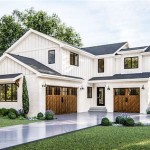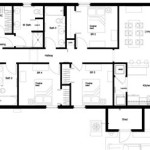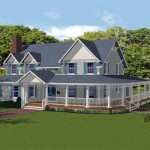Frank Lloyd Wright House Plan: A Timeless Vision of Organic Architecture
Frank Lloyd Wright, the renowned American architect, was widely acclaimed for his innovative designs that celebrated the harmony between nature and human habitation. His house plans embodied a philosophy known as Organic Architecture, which emphasized the integration of buildings into their surroundings, maximizing natural light, and employing sustainable materials. ### Design Principles of Wright's House Plans Wright's house plans were defined by several key design principles:Open Floor Plans:
Wright believed in creating spacious, flowing interiors that eliminated the boundaries between rooms. His open floor plans allowed for increased natural light and air circulation, creating a sense of openness and connection.Natural Materials:
Wright used natural materials such as wood, stone, and glass in his house plans. These materials not only reflected the surrounding environment but also showcased the beauty and durability of nature's creations.Emphasis on Natural Light:
Wright's designs prioritized natural light. He incorporated large windows, skylights, and cantilevered roofs to allow ample sunlight to flood the interior spaces. This approach not only reduced the need for artificial lighting but also created a warm and inviting atmosphere.Integration with Nature:
Wright's house plans were designed to complement the surrounding landscape. He carefully considered the natural contours of the site, incorporating terraces, patios, and gardens to extend the living space outdoors.Geometric Forms:
Wright often employed geometric forms in his designs, particularly squares, triangles, and circles. These shapes created a sense of order and harmony, while also reflecting the natural patterns found in the environment. ### Notable Frank Lloyd Wright House Plans Some of Wright's most renowned house plans include:Fallingwater (1935):
Perched dramatically over a waterfall, this iconic house is characterized by its cantilevered terraces and extensive use of glass. The design seamlessly blends the interior and exterior spaces, creating a profound connection with nature.Robie House (1908):
Known for its cantilevered roof and horizontal lines, the Robie House exemplifies Wright's Prairie School style. Its open floor plan and integrated light fixtures create a spacious and inviting interior.Taliesin (1911-ongoing):
Wright's own home and studio, Taliesin, serves as a testament to his lifelong dedication to Organic Architecture. The sprawling complex features a series of interconnected buildings that reflect the surrounding hillsides and incorporate natural materials. ### Legacy and Influence of Wright's House Plans Frank Lloyd Wright's house plans have had a profound impact on residential architecture worldwide. His emphasis on natural materials, open floor plans, and integration with nature has inspired countless architects and homeowners alike. The timeless appeal of his designs continues to resonate today, showcasing the power of architecture to enhance the human experience.
Gallery Of Ad Classics Frederick C Robie House Frank Lloyd Wright 9

Frank Lloyd Wright

Willey House Stories Part 13 The Plow That Broke Plains Frank Lloyd Wright Foundation

S First Frank Lloyd Wright House Blocked By Planning Inspector

Frank Lloyd Wright House Floor Plans Historic American Homes Brand

Hugedomains Com

Three Frank Lloyd Wright Unbuilt Houses Brought To Life As Digital Reconstructions

Solaripedia Green Architecture Building Projects In

Floor Plan The Elam House

An Evolving Aesthetic Frank Lloyd Wright S Home Studio In Oak Park Illinois The Craftsman Bungalow








